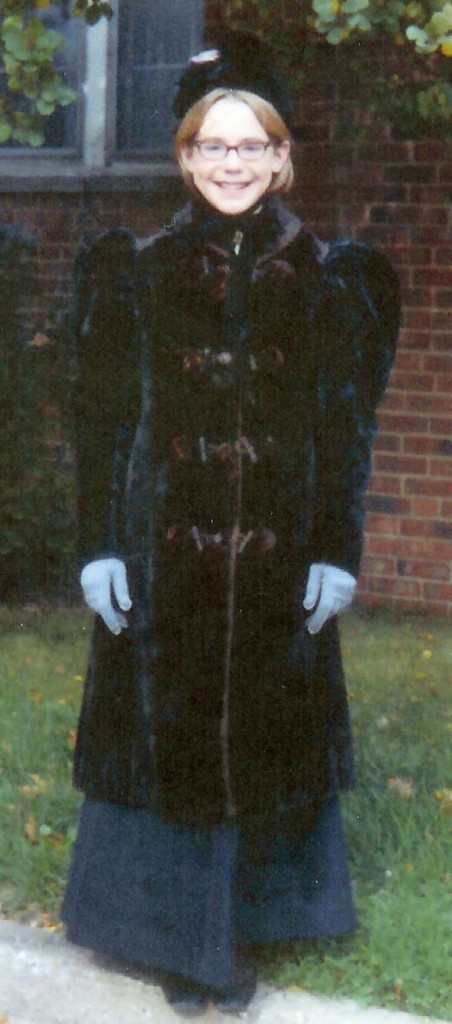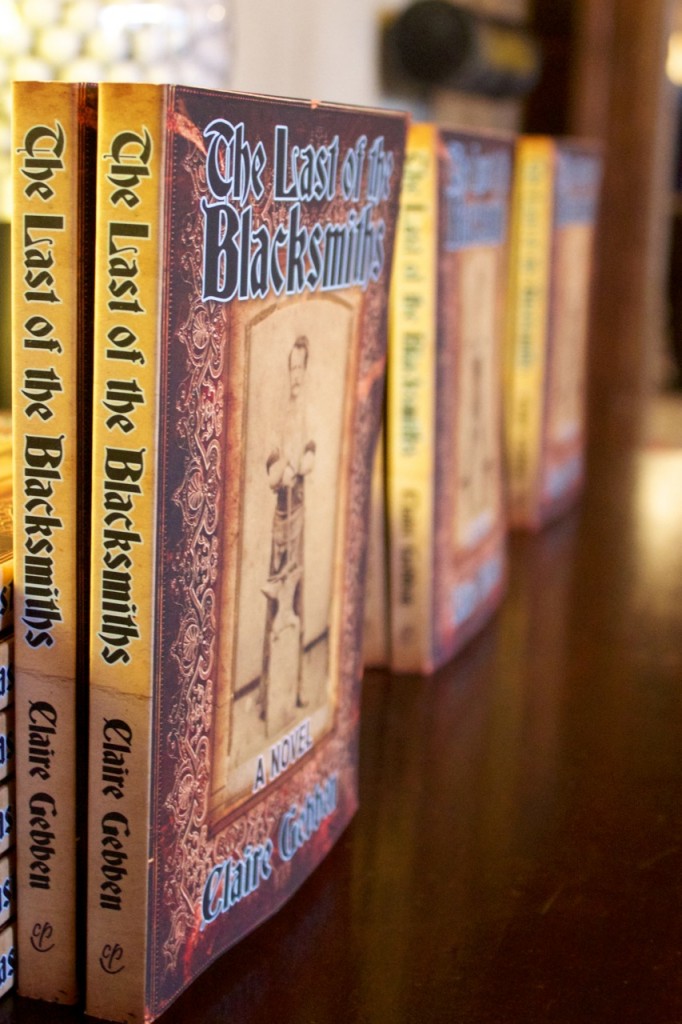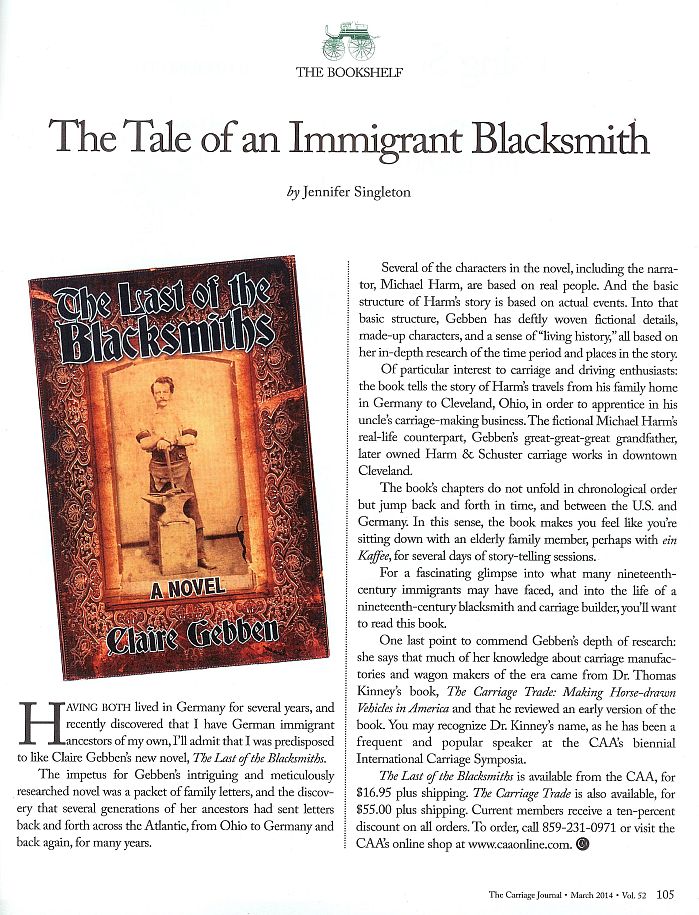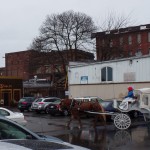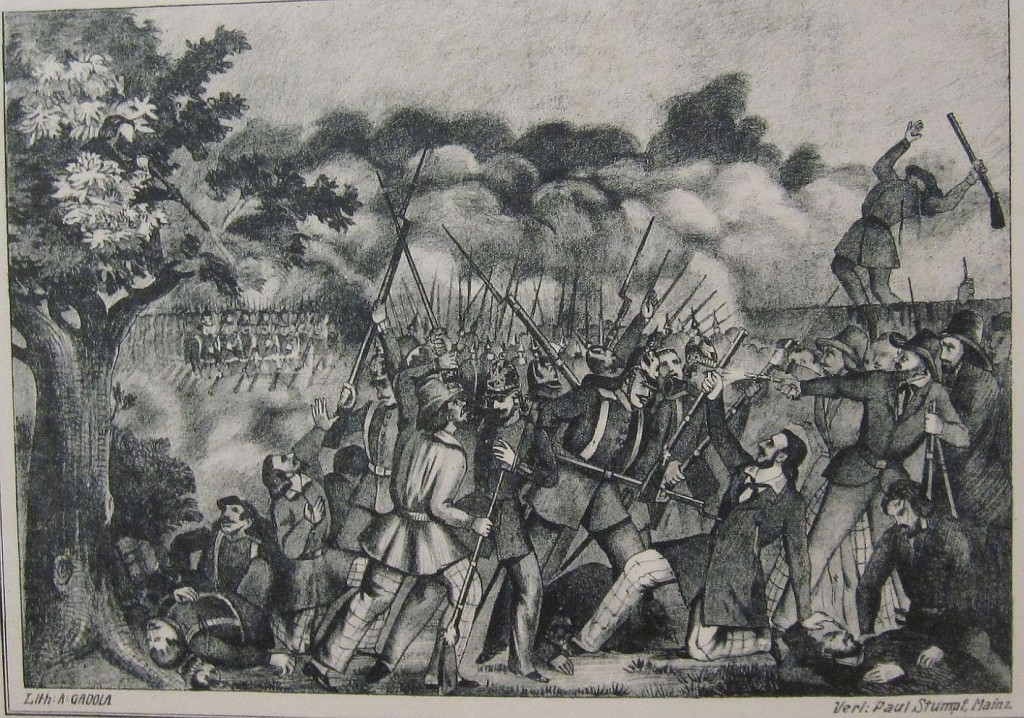Many thanks to Stephanie Barbé Hammer @ MAGICALLY REAL for inviting me to participate in the Writing Process Blog Tour! Stephanie has published three academic books, and writes and publishes magical realist short stories, expressionist short stories, and a very little bit of non-fiction. Her collection of prose poems Sex With Buildings was released by Dancing Girl Press. She is currently seeking publication for her novel The Puppet Turners of Narrow Interior and is writing a sequel. In her writing, Stephanie explores the power, beauty, and fascination that surrealism, expressionism, magical realism and the unreal exert over us and our attempts to (re)think our world. Stephanie’s poetry collection How Formal? is forthcoming in May with Spout Hill Press.
You can read Stephanie’s responses to the Writing Process questions here.
Below, you’ll find my responses to the Writing Process Blog Tour:
1. What am I working on?
My novel The Last of the Blacksmiths (Coffeetown Press) was released just a month ago, so lately, my writing has been mostly supplemental articles: about food and wine in the Pfalz, about my adventures learning to blacksmith, giving interviews, stuff related to the novel. With my German cousin, I’m also putting together some three dozen letters written by German immigrant blacksmiths and wagon-makers, a book mainly of historical and genealogical interest.
Happily, I’m at last easing into in the earliest phase of another historical fiction novel, the story of a Scottish immigrant to America in the 1800s. I’ve written an opening scene, and am starting the research to immerse myself in that mindset and world.
2. How does my work differ from others in its genre?
I have to admit, I’m a closet teacher. In my college days, my roommates nicknamed me “know it all” because I was always trying to tell them stuff I was learning about. I think my writing reflects that, my desire to share what I’m finding out, things that I think are intriguing and help me see my life and the world in clearer perspective. Some historical fiction shies away from being a “history lesson,” and I get that. But I guess I’m inclined to worry more about writing a story so it transcends the page, drawing on whatever it takes to build that world in the imagination.
3. Why do I write what I do?
I write because I can’t help it. Experience keeps forming itself to me in sentences I feel a need to write down. So I write across genres. The historical fiction novel is a first for me, but I loved doing it. I wrote it because I received a gift, authentic 19th century letters that told a story I longed to share. I’ve also written a young adult novel about a backpacking expedition (still in the drawer, unpublished) and short stories and personal essays. I’m a columnist these days for my local newspaper, and in addition to this author blog, I blog monthly about hair. I suppose I write about whatever entertains me, with the hope it will entertain others as well.
4. How does my writing process work?
When I’m working on a big project like a novel, I write just about every day, usually early in the morning. I tend to save new writing for the mornings and revise in the afternoons. Sometimes I can’t sleep, and then I get up in the middle of the night and jot down sentences as they come. The hardest thing for me is the blank page. Lots of people hate revision, but I love it. I love going deeper, bringing out themes and metaphors and ideas I didn’t see at first. That’s my favorite part.
*************
Next week the Writing Process Blog Tour continues to branch out with two amazing story-tellers:
Stephanie Lile. Stephanie is a writer, teacher, exhibit developer, researcher, art lover and museum educator. She has written for magazines such as Columbia, Calliope, Bacopa, Soundings Review, The Morgan Horse, and ColumbiaKids. Her nonfiction book History Lab To Go! is an award-winning museum publication. Stephanie has launched a small studio that is the percolator for her publishing projects, as well as home to the KBL Family Collection of amazing WWII imagery. Currently, she is working on publication of her novel The Tail Gunner, about a ghost soldier of WWII who cannot rest until he’s completed his final mission, and his granddaughter Sylvie is just the one to help make that possible.
Steve W. White. Steve teaches math and science during the day and writes at night, mainly SF and fantasy. He’s indie-published three novels: Outrageous Fortunes: A Novel of Alternate Histories, New World: A Frontier Fantasy Novel and Read No Evil, and a collection of short stories: Turing’s Revenge and Other Stories. Lately, he’s earned a Fiction MFA from the Northwest Institute of Literary Arts on Whidbey Island, Washington. You’ll find his blog about writing at Novel Dog.
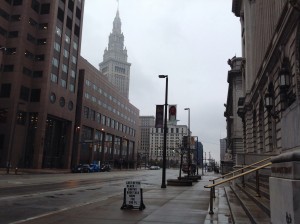 What a welcoming place. My brief week in Cleveland has flown by. I’ve met descendants of other Cleveland blacksmiths and craftsmen, historical fiction fans, researchers on the quest for German ancestors, history buffs, and dear family friends, including a few descendants of a character in the novel (Henry Hoppensack).
What a welcoming place. My brief week in Cleveland has flown by. I’ve met descendants of other Cleveland blacksmiths and craftsmen, historical fiction fans, researchers on the quest for German ancestors, history buffs, and dear family friends, including a few descendants of a character in the novel (Henry Hoppensack).
